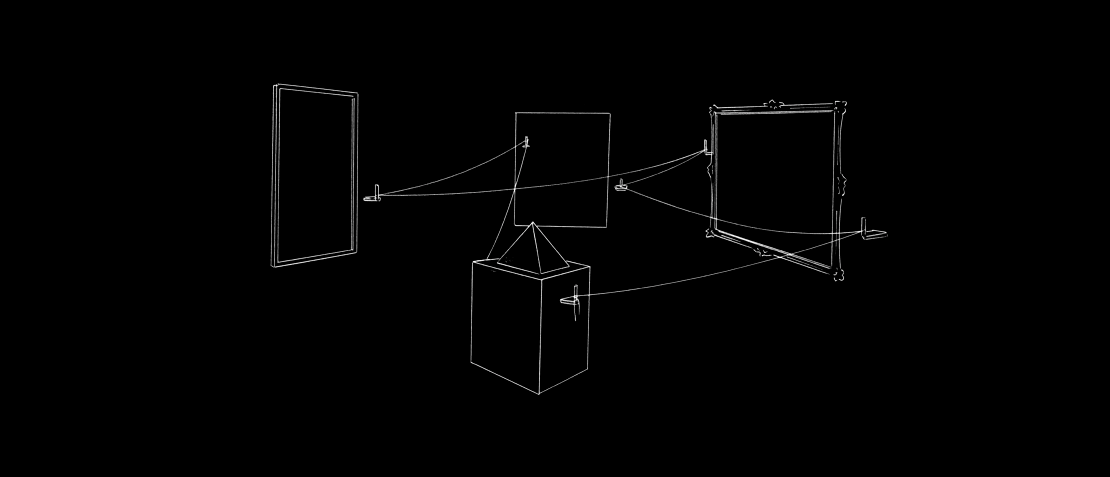As We May Be
Reconsidering the Computer Paradigm: From Symbolic to Enactive
In July of 1945, Vannevar Bush published the foundational essay, “As We May Think,” envisioning a powerful future for information machines. Having just passed the 80-year anniversary of this seminal work, it is an ideal moment to zoom out and critically assess the overall trajectory of computing. When a new technology emerges, there is always a vast range of ideas for what it might achieve, but over time, our collective conception of that technology tends to narrow. Partly this is because we learn its true nature, but often this narrowing is born of habit—we "know" what a computer does, and that limits our openness to what it could be.
This narrowing is clear in Bush’s original vision. He saw computers primarily as a tool for intellectual, information-based work, stating: “whenever logical processes of thought are employed—that is, whenever thought for a time runs along an accepted groove—there is an opportunity for the machine.” This focus, while crucial for the sciences, set a path for the computer to be solely a tool for the mind—a symbolic and cognitive engine—rather than a device integrated with all aspects of the human experience. Bush's conceptual machine, the Memex, was designed around static records (microfilm), reinforcing the computer's role as a repository and processor of established, fixed data, not as an active partner in fluid, physical discovery. This fundamental bias toward symbolic record-keeping and formal logic has defined the last eighty years of machine architecture, anchoring the computer to the screen, the keyboard, and the desk.
The Developmental Fork in the Road
Importantly, early computing pioneers who developed graphical interfaces were deeply influenced by the fields of childhood development and cognitive psychology, particularly the work of Jean Piaget, Maria Montessori, and Jerome Bruner. Bruner’s theory of cognitive representation is especially instructive, proposing that human learning progresses through three distinct, cumulative modes:
Enactive: Learning through action and motor skills (doing).
Iconic: Learning through visual interpretation and images (seeing).
Symbolic: Learning through language and abstract symbols (thinking).
The history of computer development, however, unfolded in the opposite direction, moving first from symbolic systems (command-line code and punch cards) to iconic systems (the Graphical User Interface, or GUI). The GUI, with its use of icons for files and folders, was a major triumph in leveraging iconic learning, making the computer visually navigable. But the pioneers faced a profound challenge in capturing the enactive mode (you can learn more about these challenges from this Bill Verplank interview)
This struggle is elegantly captured by Moravec’s Paradox, which observes that skills requiring high-level reasoning (like playing chess or performing complex calculations) are relatively easy for computers, while skills that appear effortless to humans—like perception, mobility, or understanding the physical world—are extraordinarily difficult. The act of riding a bike, tying a knot, or catching a ball are all intensely complex enactive skills that require real-time, continuous sensing, prediction, and probabilistic modeling of the physical world. The discrete, deterministic, and symbolic logic of early computers was simply unequipped to handle this continuous complexity. Consequently, the developers of the personal computer, being unable to computationally model the complexities of human movement and contextual action, were only able to create enactive interfaces through relatively lightweight examples like the drag and drop interfaces. The computer was confined to the desk, becoming a static window onto an abstract digital world, rather than a dynamic, sensing interface with the physical one.
Toward a Computer for Being
If we truly reconsider who computers are for and what people do with them, we must look beyond the narrow segment of knowledge workers—the accountants, writers, and administrators who spend their days manipulating spreadsheets, email, and documents. This is an essential but highly specialized slice of human activity.
The majority of human work across the globe consists of the collection, transformation, and synthesis of materials (e.g., construction, manufacturing, farming, repair), or is centered on complex human social relationships (e.g., teaching, nursing, caregiving). This labor demands action, spatial awareness, motor precision, and contextual understanding—precisely the enactive skills that computers currently ignore or merely document, rather than assist.
We do not merely need a computer for thinking; we need a computer for being—a machine that can fully embrace the complexity of the human condition by integrating with our actions and our environment. This new class of enactive computers will be defined by their ability to measure, sense, predict, and guide the act itself, turning the machine into a co-agent in physical labor.
New Computers need new interfaces
Creating truly useful enactive computers will require overcoming the second half of Moravec's Paradox, and the key lies in leveraging advanced AI not just for natural language processing, but as a World Understanding Engine, capable of more ambiguous understanding. If we want to augment reality, the computer must first be able to deeply and semantically understand reality, its physics, and its affordances. This AI-powered perception is the engine that finally unlocks the enactive dimension. It transforms the computer from a passive recorder of data into an active partner in physical experience.
We do not merely need a computer for thinking; we need a computer for being—a machine that can fully embrace the complexity of the human condition. To successfully design interfaces and systems that can augment our embodied, enactive existence, we must root our work in philosophy and psychology. This necessary shift from computing-for-thought to computing-for-being aligns directly with the tenets of Embodied Cognition. This leads us to the critical inquiry of Part Two of this series…. How does this new interface work?
